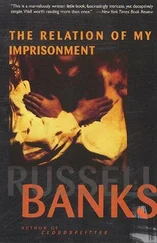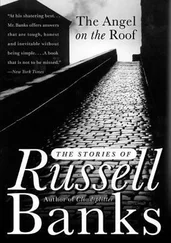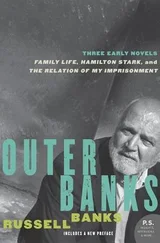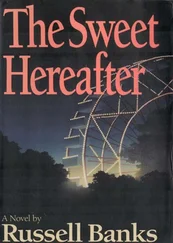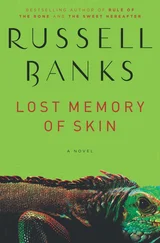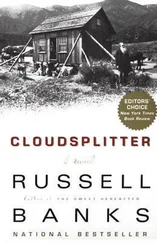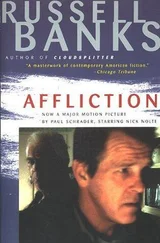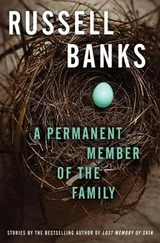It was several minutes later, when, as I was committing to memory the call of the brown creeper (Certhia familiaris) , whispering to myself “see-ti-wee-tu-wee,” that Hamilton interrupted and informed me that he and Jenny were going for a walk to the top of Blue Job, where it would be cooler, and if I wanted a lift back to his house, where I had parked my own car, he would provide it. I smiled hello politely to Jenny, who was sweating profusely, and said no, that I’d stay here awhile and would catch a ride out for my car later in the evening.
Hamilton seemed relieved, or at least he did not scowl as he usually did when I abridged or altered one of his suggestions with a plan of my own, and the two of them left together, as silently and intently as they had been dancing.
The next time I saw Hamilton, not three weeks later, he had married her. “Well, I married her,” he said.
“Who?”
“Jenny, the school nurse,” he said, as if I should have expected it. I did not, of course. Quite the opposite.
C., however, was not surprised.
“Well, let me tell you, it surprised me! ” I fairly shouted, startling him back into his chair.
“Goodness!”
Certainly it surprised me. Hamilton had but barely shed his second wife Annie, and he had only just met this new one. Also, because of her profession, as I have mentioned, and because of her rather ordinary life so far, which, I assumed, gave her a rather ordinary mind, and because of her appearance, this new one did not, to me, seem to be Hamilton’s “type.” She was a handsome woman, in an athletic way, but her overall appearance was Prussian, almost manly. Both of Hamilton’s previous wives had been physically delicate by comparison, even Annie, who did not start to gain weight until after she had married him. This woman seemed invulnerable, which surely only reinforced what I assumed (from her profession) was a custodial temperament. How could Hamilton have thought he would be happy with such a woman, especially so soon after the dissolution of his second marriage and that final encounter with his mother and the insights into what he called “smotherhood” gained there?
It wasn’t difficult to understand or to predict, my large friend assured me. According to him, though my even larger friend, Hamilton, might well be conscious of a particular image dominating his relationship with his mother, he might even be conscious that the same image had dominated his relationships with his other wives, and possibly his relationships with all women (an awareness, C. pointed out, that so far I had not granted Hamilton); in spite of this awareness, this self-consciousness, the man might still be compelled to go on living in its dominion.
At first I didn’t understand, but then C. explained that it depended on the image, its qualities. A uroboros, for example, is an image of closure, a frightening image of compulsive, ritualistic repetition. To have one’s life organized under the dictates of a uroboros would be painful, indeed, and if one were unfortunate enough to be conscious of that image, one might find it even more painful, for all one could do would be to raise the repetition to a higher level, hoping to avoid it there, only to find oneself once again repeating oneself. What one would have in that case would be a spiraling uroboros, as it were. In Hamilton’s case, by becoming conscious of his compulsive attraction to women who wanted to “smother” him and his resultant revulsion at the indebtedness incurred, that is, his “guilt,” his only recourse seems to have been to introduce “wrath,” so as to speed up the process, to spin the wheel a little faster, hoping thereby (one must assume) that the pain for the woman and confusion for himself would be lessened.
Rochelle’s demon Asmodeus was not a wholly imprecise way of perceiving her father’s behavior, C. reminded me. It explained a great deal — his fervent seductions, his cold withdrawals, and, finally, his wrathful rejections. If you concede sincerity to such a man, then his behavior does indeed seem possessed. The difficulty with the image of Asmodeus, however, is that it holds out the possibility of exorcism. Magic. The right combination of aspects of the moon, chants, artifacts and fetishes, and voilà! he’s free. A daughter’s love, a spurned daughter’s love, explains her attraction to it.
But, I, as C. quite rightly pointed out, I was no man’s daughter, spurned or otherwise. Which was doubtless why I had chosen to describe the same man with the image of the holy man, the man outside all social prescriptions for meaningful behavior, the man who uses his life as allegory, who, to demonstrate human ordinariness, heaps ashes on himself, who, to demonstrate the vanity of human wishes, forgoes all normal access to praise and achievement, the man who, to demonstrate the possibility of self-transcendence, denies the claims the rest of us honor.
We are the only creature that does not know what it is to be itself, C. went on. We are the only creature that must perceive itself through the use of images. The limits and the possibilities implied by those images, then, are the limits and possibilities for our perceptions of ourselves. And because we can hardly be expected to exceed the morphology of our perceptions, then it’s clear that our images of ourselves determine the morphology of our very lives. Rochelle saw her father through the image of a particular kind of demon-possession, one that combined and thus explained his peculiar juxtaposition of drunkenness, lust and rage. I had tried to convert her to my point of view, which depended on her coming to see him as a holy man. C., in his turn, was recommending that I see Hamilton as a spiraling uroboros. We were all three trying to perceive him, to imagine him into a reality in our own lives, by means of a coherent image. Yet he persisted in resisting our imaginations. The demon had fallen away in the face of Hamilton’s obvious intentionality. No man possessed could be that willful. And the holy man was rapidly being secularized by what appeared to be compulsive behavior rather than self-conscious, exemplary behavior designed to be taken as allegorical. And now this somewhat pathetic and depressing image of the self-devouring serpent had come to control my perceptions of the man. The time had come to try to discover how Hamilton perceived himself, if at all. And if this could not be determined, to ask oneself if, indeed, one had invented him altogether.
Thank heaven for C.! If it hadn’t been for his presence in my life, his very presence that evening in my library, I would at that moment have felt wholly alone.
THIS IS A PAINFUL CHAPTER for me to write. Before I’m through with it, I will have lost my best friend, will have sent him from my house into the snowy cold, leaving me behind, remorseful and, to counter remorse, desperate for justification. A dangerous state for a rationalist: it’s when he is most tempted to depart from reality and fly off into the soothing heavens of reason.
It began with the death of Alma Stark — not the actual fact of her dying, but later, in my describing it. It’s possible that it began earlier, of course, in Chapter Nine, where I told of Hamilton’s meeting and consequent marriage to Jenny, but I was not aware then of any irreconcilable differences between my and C.’s points of view. At that time, despite the differences between us, I was still able to use C.’s point of view to inform my own, as I had been doing all along. So that at the end of Chapter Nine, while I may have seemed disconsolate at having to lose Rochelle, I could still console myself with the continued presence of C. But all that was before I had told of the death of Alma Stark.
Читать дальше

